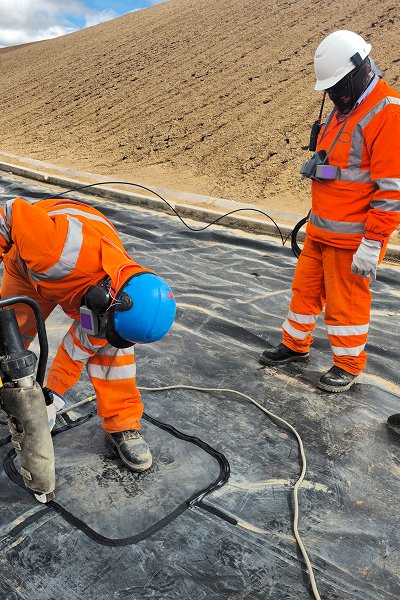What is geotextile?
Geotextile is a kind of engineering textile material with certain strength, permeability and durability, which is made of polypropylene (PP) or polyester (PET) as the main raw material. It is mainly divided into two categories according to the molding method:
Woven geotextile: formed by interweaving long filaments or flat filaments perpendicularly in warp and weft directions;
Non-woven geotextile: formed by short fibers or filaments through needle punching, thermal bonding, and chemical bonding.

Comparative analysis of the performance of woven geotextiles and non-woven geotextiles
Woven type: Due to the direct load-bearing of the warp and weft structure, it exhibits extremely high tensile strength and is suitable for high-strength soil reinforcement;
Non-woven type: The fibers rely on friction and entanglement to bear the load, and the tension is relatively low, but the elongation is higher.
Non-woven geotextiles have uniform pore size distribution and high porosity, which is better than woven types, especially suitable for percolation layers and drainage systems;
Woven geotextiles have large water flow resistance and are generally not recommended for use in filtration-sensitive structures.
Woven fabrics are slightly stronger in terms of UV resistance and wear resistance;
Non-woven fabrics perform better in terms of acid and alkali corrosion and microbial tolerance, and are especially suitable for long-term use underground.
Non-woven fabrics are softer and more cuttable, and are suitable for complex slopes or special-shaped structures;
Woven fabrics are rigid and easy to spread, but have poor flexibility, which is not conducive to fitting complex contours.
Detailed explanation of the production process: comparison of two technical paths
Production process of woven geotextiles
Polypropylene (PP) granules → wire drawing (monofilament or flat wire) → warping → weaving machine interweaving → winding → quality inspection → packaging and delivery
Core of the process: forming a flat and tight cloth surface through the warp and weft cross structure;
Features: high strength, uniform structure, suitable for structural reinforcement.
Production process of non-woven geotextiles
Polyester (PET) or polypropylene → melt spinning or opening fiber → web forming → needle punching or thermal bonding → winding → inspection → delivery
Core of the process: the fibers are randomly arranged and combined to form a three-dimensional void structure;
Features: strong water permeability, high flexibility, and certain filtering and buffering effects.
Highway soft foundation treatment project (woven geotextile)
Material selection: 40kN/m bidirectional woven fabric;
Function: Improve foundation bearing capacity and prevent lateral deformation;
Result: Settlement stability increased by 50%, construction period shortened by 20%.

Leachate drainage system for landfill (non-woven geotextile)
Material selection: 400g/m² staple needle-punched fabric;
Function: Filter leachate and protect HDPE geomembrane;
Result: Drainage efficiency increased by 80%, and membrane puncture accidents were zero.



